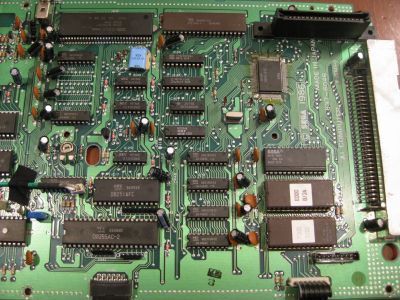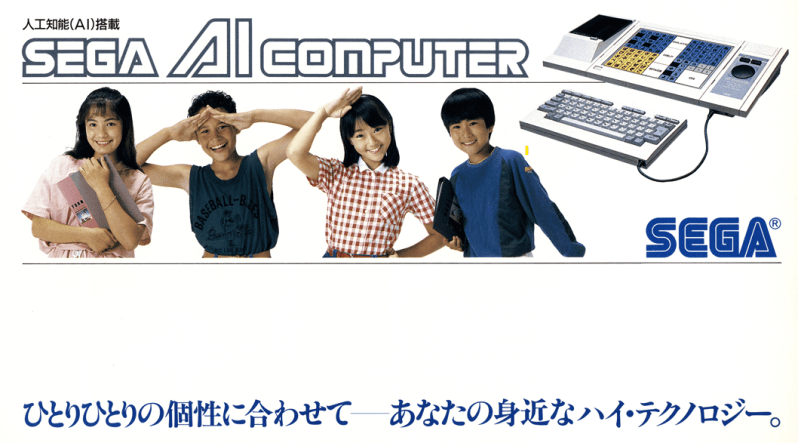Recently a little-known Sega computer system called the Sega AI Computer was discovered for sale in Japan, including a lot of the accompanying software. Although this may not really raise eyebrows, what’s interesting is that this was Sega’s 1986 attempt to cash in on Artificial Intelligence (AI) hype, with a home computer that could handle natural language. Based on the available software and documentation, it looked to be mostly targeted at younger children, with plans to launch it in the US later on, but ultimately it was quietly shelved by the end of the 1980s.

The computer system itself is based around the NEC v20 8088-compatible MPU with 128 kB of RAM and a total of 512 kB of ROM, across multiple chips. The latter contains not only the character set, but also a speech table for the text to speech functionality and the Prolog-based operating system ROM. It is this Prolog-based environment which enables the ‘AI’ functionality. For example, the ‘diary’ application will ask the user a few questions about their day, and writes a grammatically correct diary entry for that day based on the responses.
On the system’s touch panel overlays can be used through cartridge or tape-based application to make it easy for children to interact with the system, or a full-sized keyboard can be used instead. All together, 14 tapes and 26 cartridges (‘my cards’) had their contents dumped, along with the contents of every single ROM in the system. The manual and any further documentation and advertising material that came with the system were scanned in, which you can peruse while you boot up your very own Sega AI Computer in MAME. Mind that the MAME system is still a work in progress, so bugs are to be expected. Even so, this is a rare glimpse at one of those aspirational systems that never made it out of the 1980s.
















I was wondering why the cable exits the front of the keyboard, but I eventually realized that it’s probably because you’re expected to rest the keyboard on top of the unit when not using the touch panel.
It appears that the keyboard was intended for use by adults, while the touch panel with overlays was targeted at children, who’d use a more limited character set. So for adults the keyboard would indeed essentially replace the touch panel by covering it. Not a bad way to make the system accessible for a larger audience, I think.
Likely a small-node LLM/RNN doing user assistance stuff on a under powered PCB
[drunk comment]
Makes sense. 80s/90s people were really optimistic about AI and companies everywhere we funding it. It went stale though and the AI industry sort of crashed. The one major driver of AI today though is the ease of access to limitless training data, which just wasn’t available back then (and better hardware obviously).
Languages like Prolog are pretty good for natural language, and even today ELIZA is right up there with LLM-based chatbots depending on the context. You’re right that the small vocabulary of those older systems don’t help much, but when all you have is a few dozens of kBs, that’s just how things work.
The training data is indeed what made the shift from LMs to LLMs possible, along with more efficient data encoding methods. Though you’d still need hundreds of GBs of ROM for a GPT-4 version of this Sega system, not to mention some serious I/O and processing power. And the GPT-4 version likely would hallucinate a lot more than the Sega system did, carefully curated as it was…
Sega attempted AI back then before it actually took off now?
Oh, brother.
I know Sega had made home computers already, but…